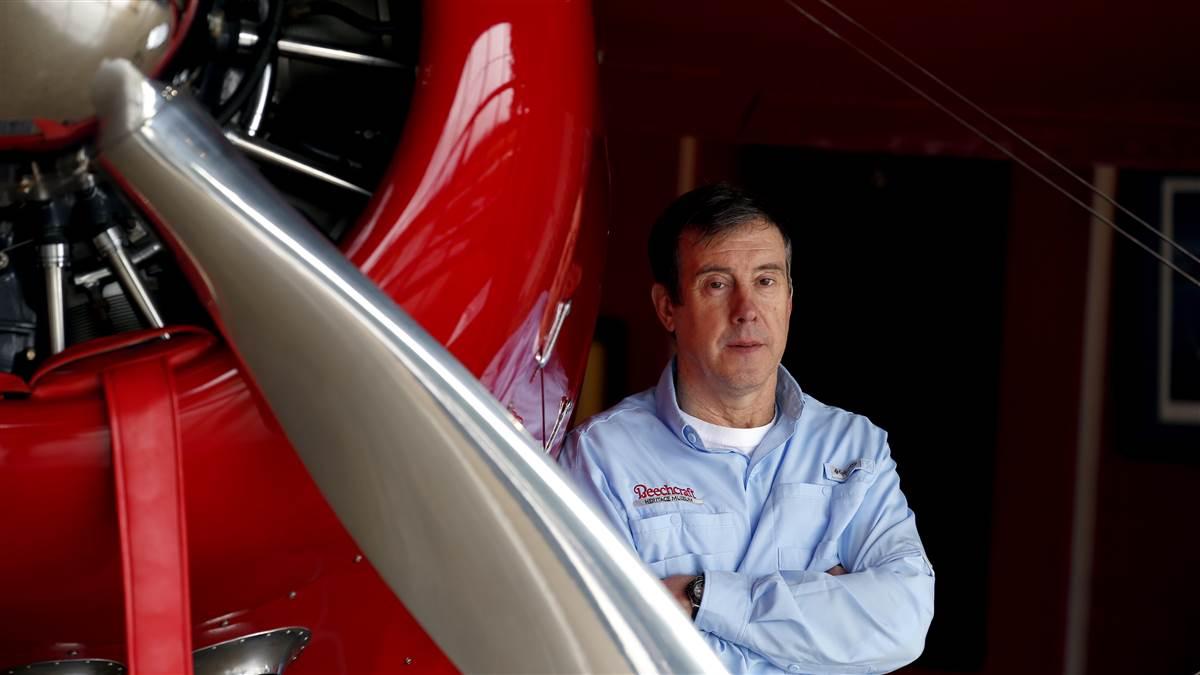People: Meet Charles Parish
Beechcraft Heritage Museum president has his eyes on the future

Charles Parish will welcome visitors to the Beechcraft Heritage Museum during the AOPA Fly-In at Tullahoma, Tennessee, September 13 and 14.
beechcrafthm.org
Photography by Chris Rose
That’s what Charles Parish’s family and friends were called as they flew in and out of his parents’ grass field in Tullahoma, Tennessee, and Charles—along with his brothers—joined in. He earned his private pilot certificate in 1980 and just kept earning certificates and ratings; his father required each son to earn ratings before moving on to fly some of the growing number of remarkable aircraft in the “Parish Aerodrome.”
“In my family, you had to earn your way into the aircraft you had the opportunity to fly,” said Parish. “For example, I was required to have my private pilot’s certificate before I had permission to fly the family Piper J–3 Cub, Stearman, and Travel Air 4000. I had to earn my instrument rating before flying the Beech Staggerwing and my multi-instrument rating for the Beech 18. Finally, I needed to obtain a seaplane rating to fly their Cessna 206 on straight floats.”
This breathtaking assortment of aircraft is what makes the Beechcraft Heritage Museum so remarkable. That and its president’s attention to detail and, well, obsessive pampering of the aircraft and the facility. From its gleaming hangar floors to the shine on every aircraft displayed in the 60,000-square-foot space, Parish’s devotion to the role he took over in 2013 is evident (he was named president in June 2019). Wade McNabb was curator from 2005 to 2015.
“I believe if you asked me why history is so important 10 years ago, my answer would have been different than it is today,” Parish said of his work with the Beechcraft Heritage Museum. “Currently, it is so important to know our country’s heritage, specifically speaking of our aviation heritage and where our freedom to fly originated.”
The Beechcraft Heritage Museum celebrates—honors—the aircraft specific to Walter and Ann Beech. From the Staggerwing to the Starship, all things Beech are commemorated here.
“The sheer accomplishments of aviators such as Louise Thaden and the Beech family; the timeless standards that these aviation icons lived by,” said Parish. “Our museum continues to honor the exceedingly high standard set in place by Mrs. Beech in how we maintain our aircraft, grounds, and campus. In order to succeed, you must have an understanding and implementation of your historic roots.”
Parish has his eye on the future, especially the future of his museum. He and his staff continue growing the educational opportunities of the BHM and the vision of its founders. He says BHM will be the “premier general aviation museum” (some would say it already is) and to be an “aviation destination.” If you’re heading to Tullahoma September 13 and 14 for the final AOPA Fly-In of 2019, it should be your destination, too.
“The future has always been our charge and keeping my eyes on what is coming is a high priority,” Parish said.
Email [email protected]



